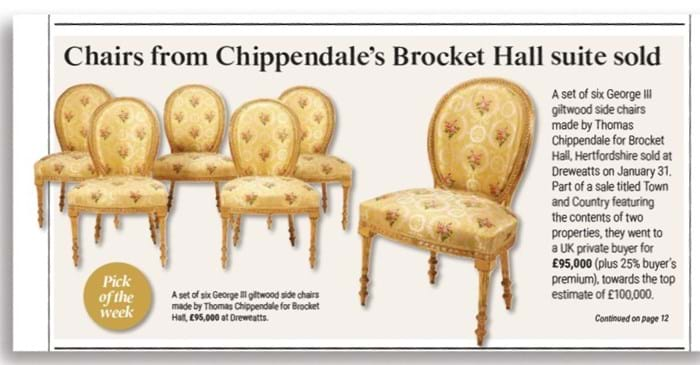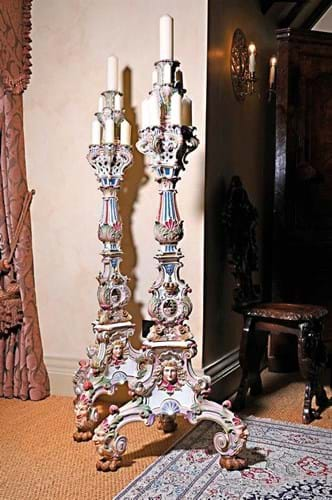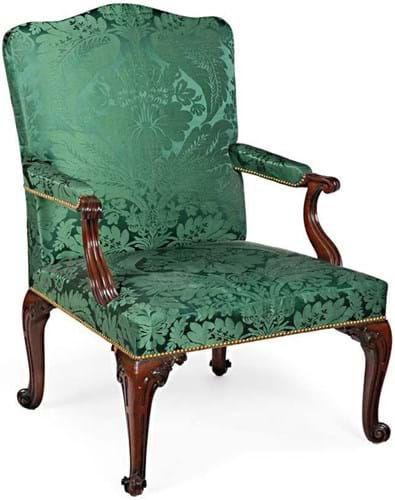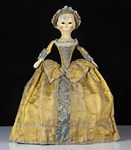The Newbury auction on January 31 also featured a single chair from another country house attributed to one of Chippendale’s contemporaries which sold for £15,000, comfortably over the £5000-8000 guide.
This carved mahogany framed armchair of c.1760, upholstered in green damask, was catalogued as having been almost certainly supplied to Henry Fiennes Pelham-Clinton, 2nd Duke of Newcastle-under-Lyne for his country estate, Clumber Park, Nottinghamshire. It had passed down by descent before going into the Graham Watson collection (sold by Bonhams, Leeds, in 2003).

The six Chippendale chairs made for Brocket Hall that sold for £95,000 at Dreweatts, featured on our front page (ATG no 2629).
Saunders attribution
It was attributed to the Soho cabinetmaker Paul Saunders (1722-71) who was a subscriber to Chippendale’s Director and the design is probably derived from a pattern for French chairs in the third edition of this publication.
Saunders was employed by Henry Fiennes Pelham-Clinton, and later his sons, to supply furnishing for various family homes: his London residence Exchequer House (ie 10 Downing Street) and Oatlands House, Surrey, in the 1750s, then Clumber Park and Nottingham Castle from the 1760s to 1771.
The chair also has stylistic features common to other Saunders commissions. The distinctive carved channelling on the front cabriole legs, the acanthus motif at the top of the legs and pronounced scroll feet are very similar in design to two sets of dining chairs at Holkham Hall, Norfolk, that were almost certainly supplied by Saunders to Thomas Coke, 1st Earl of Leicester, between 1755 and 1758.
A pair of chairs of similar pattern attributed to Saunders at Longleat featured in Christie’s sale of works from Longleat in June 2003 where they realised £81,260 including premium.

At a massive 5ft 11in (1.5m) high these elaborate Meissen candelabra were never destined for the table - they are floor standing furnishings. They date from the late 19th century but are based on a pair made for Augustus the Strong, Elector of Saxony, who bankrolled the factory in the early 18th century and bear his arms and monograms to all sides, surmounted by coronets. The candelabra were missing their candle branches and had a missing section to one of the coronets as well as sections of restoration. However, they easily outstripped a guide of £4000-6000 to take £30,000 in Dreweatts’ February 13 auction of a private collection from a Cumbrian estate.















